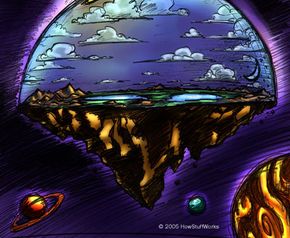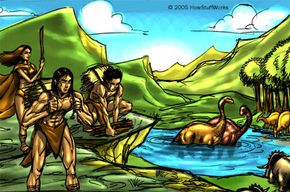Every religion in the world has its own version of the origins of life and matter. In Abrahamic religions, including Christianity, Judaism and Islam, these explanations rest on the premise that God created the universe and everything in it. This is the basic tenet of creationism in the West.
In the United States, the public debate between Christian creationism and evolution, once considered dead in the wake of the Scopes Monkey trial, is back on its feet. Most people see evolution and the theory of natural selection as scientific staples; now, many supporters of creationism want their views to be accepted as a scientific theory known as creation science. In this article, we'll examine the different forms of Christian creationism, touch on creationist views in other religions and find out what's fueling the controversy.
Advertisement
What is Creationism?

Creationism is a blanket term incorporating all beliefs that the origins of the universe and life are attributable to supernatural or miraculous means. In Christianity, creationism states that God (the Christian deity) created the world and everything in it out of nothing. Creationists believe that the account of the beginning of the world offered in Genesis, the first volume of the Old Testament, is the true account of the origins of all that we see around us. The opening of Genesis states:
The creation of the universe and all that it contains took a total of six days. On the first day, God created light and dark. On the second, He created the heavens, and on the third, He created the Earth's dry land and vegetation. God created the Sun and the Moon on the fourth day, fish and birds on the fifth day, and land animals and humans on the sixth day.
While the account of creation in Genesis is the basis for all Christian creationism, there are actually many different types of creationists within Christianity. A flat-earth creationist, for example, believes not only that God created the world out of nothing, but also that the Earth is flat, immobile and only about 6,000 years old. A progressive creationist, on the other hand, accepts the views of modern astronomy and geological dating methods that determine the Earth to be billions of years old, but does not accept the finds of modern biology: He believes that a species can only evolve under the direction of God.
We can roughly place the most well-documented types of creationism on a continuum from most literal to least literal interpretation of the Bible:
In the following sections, we'll address each of these varieties of creationism and find out what their proponents believe.
Advertisement


